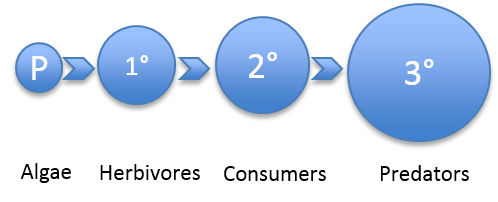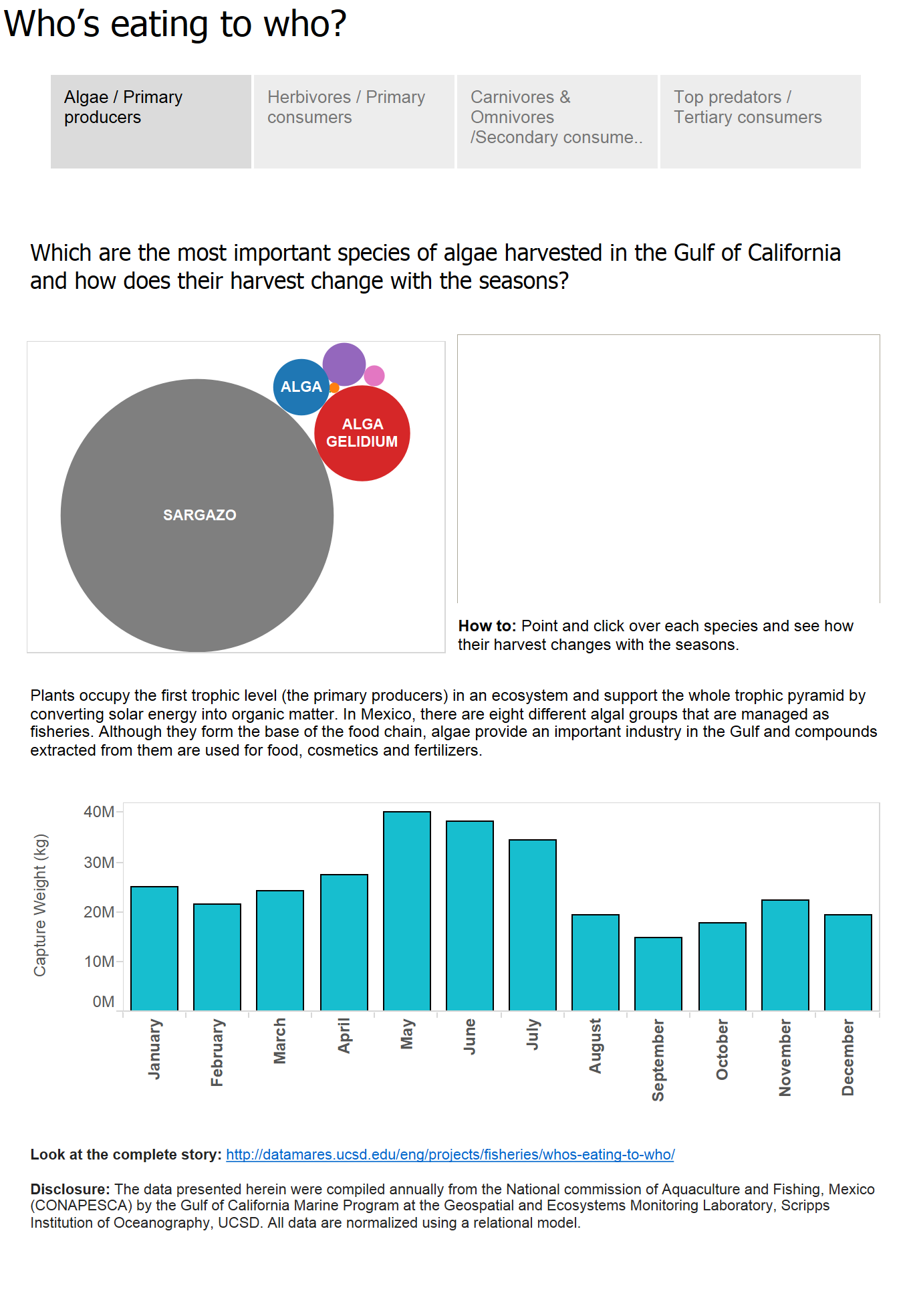Who’s eating who?.

The characteristics of an ecosystem are often best understood by the feeding relationships of the organisms within them. These relationships can be described as a food chain or pyramid, and are composed of different levels of, and links between, species. It should, however, be noted that although food chains and pyramids provide an easy way to visualize the feeding relationships within an ecosystem, they are often very simplified forms of much more interconnected relationships (food webs).

Conclusions
Understanding who eats who is important because it gives fisheries scientists a good idea of what effects removing one component of the food chain may have on the other components. For example, if we remove all of the predators, it is likely that there will be an increase in the number of carnivores / secondary consumers as there will be fewer predators eating them. This in turn will have effects on the lower levels of the food chain. Although a simplified description of reality, such food chain models help us to better understand what the consequences of fishing may be on different components of our marine ecosystems.
Authors:
Arturo Ramirez-Valdez, Andrew F. Johnson, Alfredo Giron-Nava, Octavio Aburto-Oropeza
Contact Information:
DOI:
10.13022/M3RP4M
Affiliations:
N/A
Acknowledgements:
N/A
How to cite this story:
Arturo Ramirez-Valdez, Andrew F. Johnson, Alfredo Giron-Nava, Octavio Aburto-Oropeza (2014): Who’s eating who?. DataMares. InteractiveResource. http://dx.doi.org/10.13022/M3RP4M

